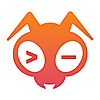
The Giant Swarm Blog
795 FOLLOWERS
Giant Swarm is a simple microservice infrastructure, built for developers. Follow this blog to know more about Kubernetes.
The Giant Swarm Blog
2w ago
Since its inception in 2014, Giant Swarm has been 100% remote — not as an afterthought or a late-minute addendum but as part of its core (and I think very cool) founding philosophy.
An ever-evolving philosophy that challenges the status quo and invites us to do things better and differently, all while not taking itself too seriously. As our VP People Anna noted, “Being remote is just a form of organization. You need human structures and psychological safety regardless."
100% remote works for Giant Swarm because we 100% believe:
People should do their best work, the company doesn’t need ..read more
The Giant Swarm Blog
1M ago
As we soon celebrate our 10th birthday, we've been reflecting on what's driven us since those early days — a mission to make our customers happy. That founding spirit fuels our excitement for Giant Swarm Platform 3.0.
This release is special because it marries the hard-earned knowledge we've gained from a decade of managing Kubernetes clusters in production with the most effective open source tools out there. It's not just about chasing trends; it's about taking a thoughtful, battle-tested approach to building a platform that truly works for you.
Our decade has been defined by rolling up our s ..read more
The Giant Swarm Blog
2M ago
The cloud and DevOps promised to make our infrastructure faster, cheaper and easier. However, in many organizations, this promise, unfortunately, fell short. Engineering teams find themselves trapped in a cycle of duplicating infrastructure, agonizing over the tools and components for each 'unique' use case, grappling with security concerns, and ultimately navigating the complex realm of operations. In some cases, disillusioned organizations are even retracting workloads from the cloud – a scenario exemplified by the well-known case of 37Signals.
At the core of these challenges is Kubernetes ..read more
The Giant Swarm Blog
3M ago
Hard to fathom we’re already a month into 2024! With the new year comes speculation about what’s on the horizon. Peeking around the corner at what’s next is one of my favorite pastimes. But before gazing farther ahead, it's worth glancing back… In retrospect, 2023 was a transformative year. We connected IRL at KubeCon, VMware Explore, re:Invent and ContainerConf. Internally, initiatives like Giant Mansions and our much-loved Onsite powered human connections despite dispersed teams. As per my now-annual tradition of making predictions to navigate the year ahead, let’s check the rearview to see ..read more
The Giant Swarm Blog
5M ago
We’re embarking on an expedition through the archives of Giant Swarm’s blog.
We're dusting off our virtual time machines and donning our trusty Sherlock hats (aka looking at old links ?) to decode the mysteries hidden within our old blog posts. But hold on, this isn't a mere nostalgia trip; we're on a quest to uncover nuggets of wisdom and bring back some forgotten treasures. In a world that hurtles forward at lightning speed, it's all too easy to forget the paths we've walked. As we wander down memory lane, we'll catch glimpses of our growth and witness the winds of change that have sha ..read more
The Giant Swarm Blog
6M ago
Being a 100% remote company for eight years and counting now, we’ve managed to pick up employees across the world. Situated in North America, South America, all across Europe, and even as far as South Korea! (Hey, Antonia ?)
Not to be confused with our yearly onsites where the whole company gets together (previous locations including our own private island in Croatia, an eco-retreat in the mountains surrounding Barcelona, and most recently, a whole village in the South of France), the Giant Mansion focuses on our different teams getting together to focus on big rocks that they want to tackle a ..read more
The Giant Swarm Blog
7M ago
While the general trend of the last decade has been to move workloads to the cloud, along with major companies jumping on the bandwagon to offer their own managed services, the industry isn’t ready to relegate on-premises infrastructure to the closet just yet.
Many organizations keep running their own Software-Defined Datacentre (SDDC) and will do so for the foreseeable future for reasons such as sovereignty, low latency prerequisites, data privacy, or simply cloud providers selling IaaS capacity on VMware Cloud Director. On top of that, companies that already have solid investments in their o ..read more
The Giant Swarm Blog
9M ago
Welcome to our series 8 on K8s where we interview interesting people in the Kubernetes community. In fact, check out our previous one with Suraj Narwade. If you’d like to be featured or know someone who’d be a great fit, tweet us and spread the love.
Lian always wanted to save the world. After attempting to become a lawyer, she decided to do something with computers instead. Working as a Fullstack Software Engineer, she got into attending tech events and giving talks on Machine Learning. During this time, she fell in love with the tech community and discovered her passion for building co ..read more
The Giant Swarm Blog
9M ago
Arm computing
Arm processors have emerged as a disruptive force in the computer industry, making significant inroads in the mobile industry and now making its mark on PCs and data centers. With an excellent performance per watt ratio and cheap prices, they present an excellent choice for sustainability and efficiency.
Initially developed as a research project at Acorn Computers in 1985, ARM, which stands for Advanced RISC Machines, was developed with the goal of creating a more efficient and cost-effective processor for computers. Over time, Arm processors have expanded their presence into var ..read more